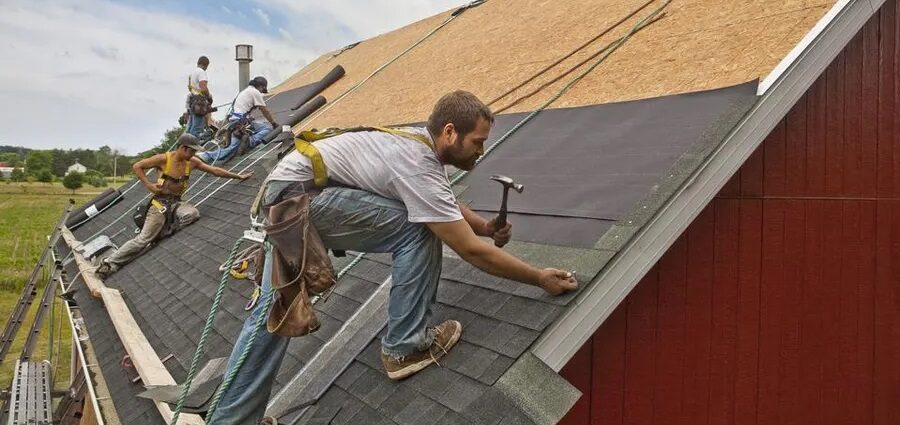Shingle roofing is a popular choice for residential and commercial properties due to its durability, versatility, and aesthetic appeal. However, over time, exposure to harsh weather conditions and wear and tear can take a toll on shingles, necessitating timely roof repair to maintain the integrity of the structure. In this article, we’ll explore the intricacies of shingle roofing repair, from identifying common issues to implementing effective solutions, to ensure your roof remains in optimal condition for years to come.
Understanding Shingle Roofing:
Shingle roofing consists of individual overlapping elements, typically made from asphalt, wood, metal, slate, or synthetic materials. These shingles provide a protective barrier against moisture, UV rays, and other environmental factors, safeguarding the underlying structure of the roof. Shingle roofs are renowned for their affordability, ease of installation, and wide range of style options, making them a popular choice for homeowners and contractors alike.
Common Issues with Shingle Roofing:
Despite their durability, shingle roofs are susceptible to various issues that may require repair or replacement. Some common problems include:
- Missing or Damaged Shingles: High winds, falling debris, and natural aging can cause shingles to become dislodged, cracked, or broken, exposing the underlying roof deck to potential water damage.
- Curling or Buckling Shingles: Heat, humidity, and poor ventilation can cause shingles to curl or buckle, compromising their ability to effectively shed water and protect the roof.
- Leaks and Water Damage: Damaged or improperly installed shingles can lead to water infiltration, resulting in leaks, rot, and mold growth within the attic and interior spaces.
- Granule Loss: Over time, shingles may lose their protective granules, reducing their resistance to UV rays and accelerating deterioration.
- Ice Dams: In colder climates, ice dams can form along the roof edges, causing water to back up under the shingles and seep into the structure, leading to water damage and compromised insulation.
Effective Shingle Roof Repair Techniques:
When it comes to shingle roofing repair, prompt action is essential to prevent further damage and costly repairs. Here are some effective techniques employed by roofing professionals:
- Shingle Replacement: Damaged or missing shingles should be promptly replaced to restore the integrity of the roof and prevent water infiltration. Roofers carefully remove the damaged shingles, inspect the underlying deck for any signs of damage, and install new shingles using appropriate fasteners and techniques.
- Sealant Application: Sealants and adhesives may be applied to damaged or loose shingles to reinforce their bond and prevent water penetration. However, sealant should be used judiciously to avoid trapping moisture and causing further damage.
- Flashing Repair: Flashing, which is installed around roof penetrations such as chimneys, vents, and skylights, plays a critical role in preventing water intrusion. Damaged or deteriorated flashing should be repaired or replaced to maintain a watertight seal.
- Roof Deck Inspection: In cases of severe damage or persistent leaks, it may be necessary to inspect the roof deck for signs of rot or deterioration. Damaged decking should be replaced to ensure the structural integrity of the roof.
Conclusion:
Shingle roofing repair requires careful attention to detail, expertise, and quality materials to ensure lasting results and protect your investment. By understanding common issues with shingle roofing, implementing effective repair techniques, and enlisting the help of experienced roofing professionals, you can maintain the integrity of your roof and prolong its lifespan. Don’t wait until minor problems escalate into major issues—schedule a roof inspection today and address any issues promptly to keep your shingle roof performing at its best for years to come.

